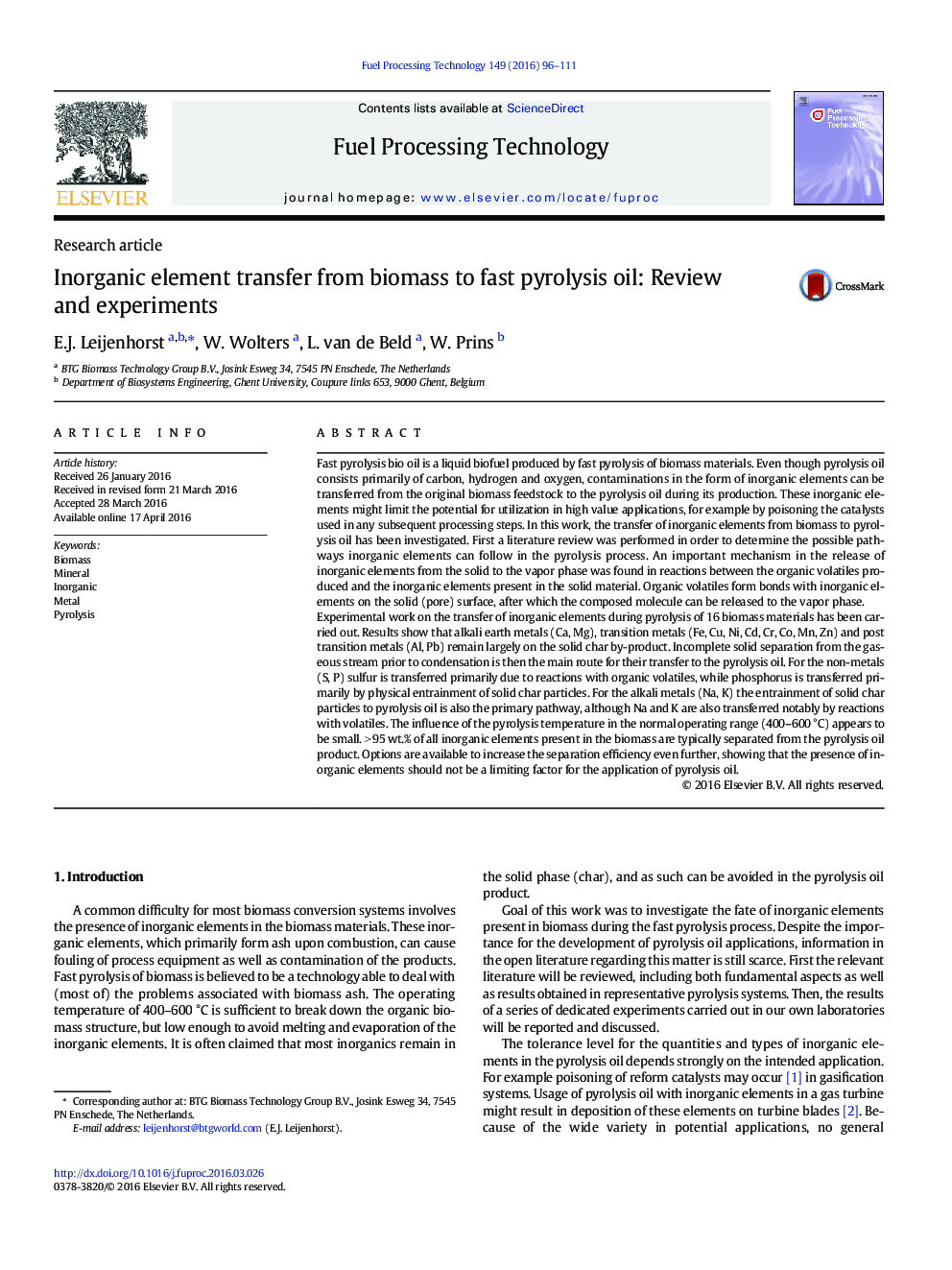| Article ID | Journal | Published Year | Pages | File Type |
|---|---|---|---|---|
| 209156 | Fuel Processing Technology | 2016 | 16 Pages |
•Over 95% of all inorganic elements are separated in the fast pyrolysis process.•Most inorganics elements that transfer to pyrolysis oil are bound to solid particles.•Reactions with organic volatiles also transfer inorganic elements to pyrolysis oil.•Sulfur transfers primarily in the gas phase to pyrolysis oil.
Fast pyrolysis bio oil is a liquid biofuel produced by fast pyrolysis of biomass materials. Even though pyrolysis oil consists primarily of carbon, hydrogen and oxygen, contaminations in the form of inorganic elements can be transferred from the original biomass feedstock to the pyrolysis oil during its production. These inorganic elements might limit the potential for utilization in high value applications, for example by poisoning the catalysts used in any subsequent processing steps. In this work, the transfer of inorganic elements from biomass to pyrolysis oil has been investigated. First a literature review was performed in order to determine the possible pathways inorganic elements can follow in the pyrolysis process. An important mechanism in the release of inorganic elements from the solid to the vapor phase was found in reactions between the organic volatiles produced and the inorganic elements present in the solid material. Organic volatiles form bonds with inorganic elements on the solid (pore) surface, after which the composed molecule can be released to the vapor phase.Experimental work on the transfer of inorganic elements during pyrolysis of 16 biomass materials has been carried out. Results show that alkali earth metals (Ca, Mg), transition metals (Fe, Cu, Ni, Cd, Cr, Co, Mn, Zn) and post transition metals (Al, Pb) remain largely on the solid char by-product. Incomplete solid separation from the gaseous stream prior to condensation is then the main route for their transfer to the pyrolysis oil. For the non-metals (S, P) sulfur is transferred primarily due to reactions with organic volatiles, while phosphorus is transferred primarily by physical entrainment of solid char particles. For the alkali metals (Na, K) the entrainment of solid char particles to pyrolysis oil is also the primary pathway, although Na and K are also transferred notably by reactions with volatiles. The influence of the pyrolysis temperature in the normal operating range (400–600 °C) appears to be small. > 95 wt.% of all inorganic elements present in the biomass are typically separated from the pyrolysis oil product. Options are available to increase the separation efficiency even further, showing that the presence of inorganic elements should not be a limiting factor for the application of pyrolysis oil.
